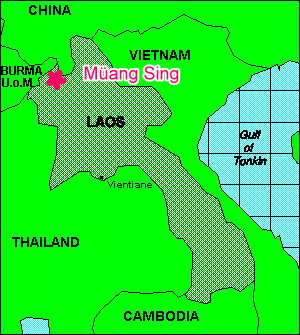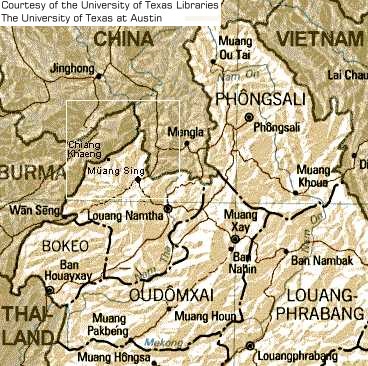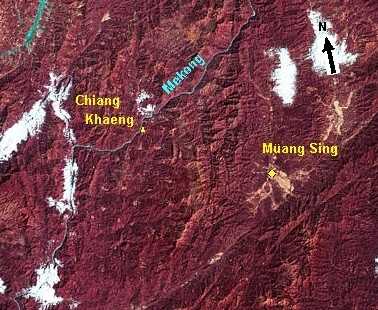

original document:
NOV 2000
reconditioned:
AUG 2019


This is an essay about the development of the town from ca. 1870 AD until today and its history with an outlook into the future. The essay is based on documents, town plans, inscriptions, information supplied by the local administration and on a visit in Müang Sing in November 1996 and a second one in February 1998 by Grabowsky and Kaspar-Sickermann.
In February 1998 a second travel to Müang Sing was extended to Ban Chiang Khaeng, one of the former capitals of the principality of Chiang Khaeng (before Müang Yu).
The reason for this exploration was the post-doctoral thesis (habilitation) by Dr. Volker Grabowsky, in which the history of the founding of Müang Sing is mentioned.
Many thanks go to Mr. Kohl of the GTZ [Gesellschaft für Technische Zusammenarbeit / (German) Society for Technical Co-operation] and his team for their support, also especially to Mr. Raubold for his assistance. We also wish to thank Mr. Khotkaeo (chief of the district), Mr. Maithamdi (deputy chief of the district) and Nan Cai Saeng (curator of the Museum of Müang Sing).
This Web-Site is a work by Dr. V. Grabowsky.
Photos and illustrations, as well as processing for the Internet
by W. Kaspar-Sickermann.


The country is mountainous. There are only a few small plains where wet rice can be cultivated.
Müang Sing is situated in the province of Luang Nam Tha and only 14 km away from the Chinese border.
You can see the region of the white rectangle in a satellite image You will be surprised how rough the country is.

The entire image covers about (86 km x 71 km ) 6.100 km²
The plain of Müang Sing (60 - 80 km²) is clearly to be seen. There is only one other a little bit smaller plain: Müang Phong that is situated already in China (NE of Müang Sing, looking like a person).
There is no other area for larger settlements. This is the reason for the geopolitical importance of Müang Sing.
The fluvial plain of the river Nam Sing
is situated at a height of barely 700 m.
The surrounding mountains
reach up to 2000 m.
